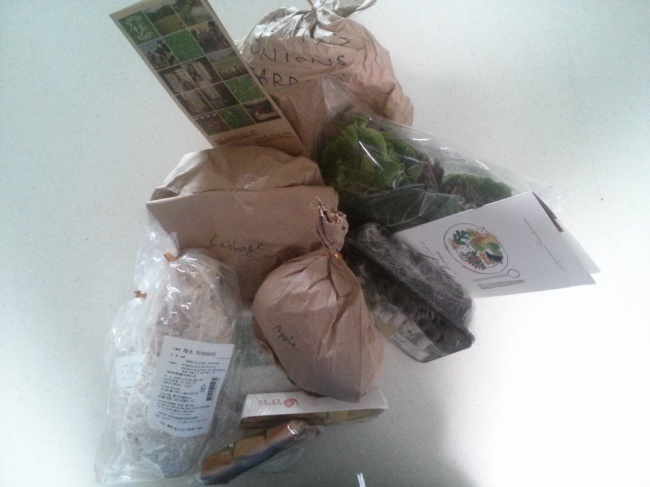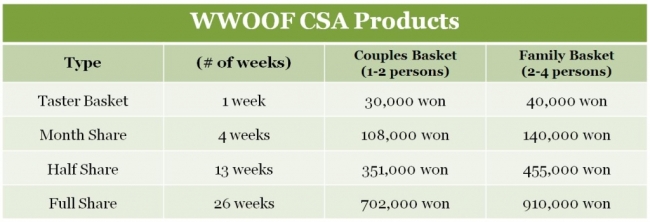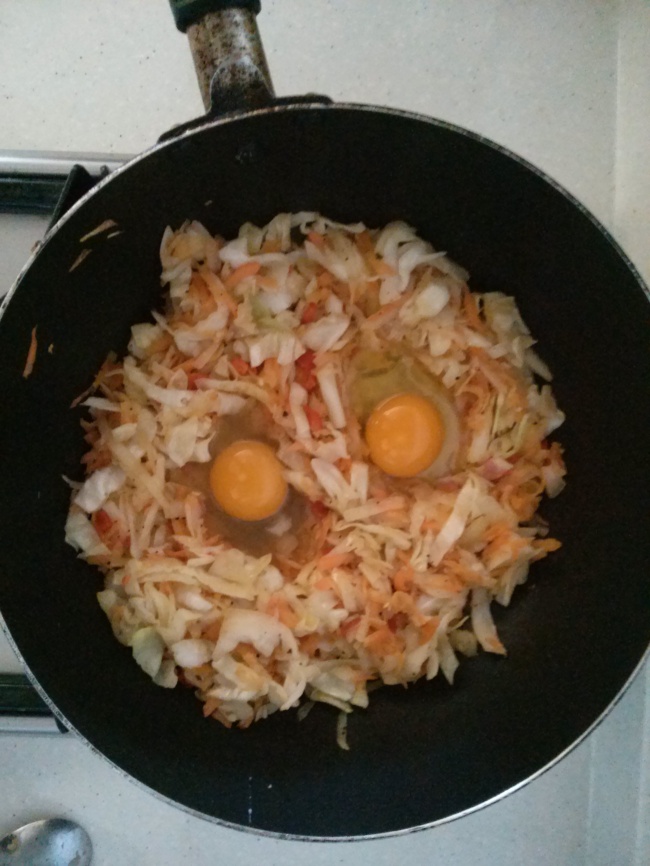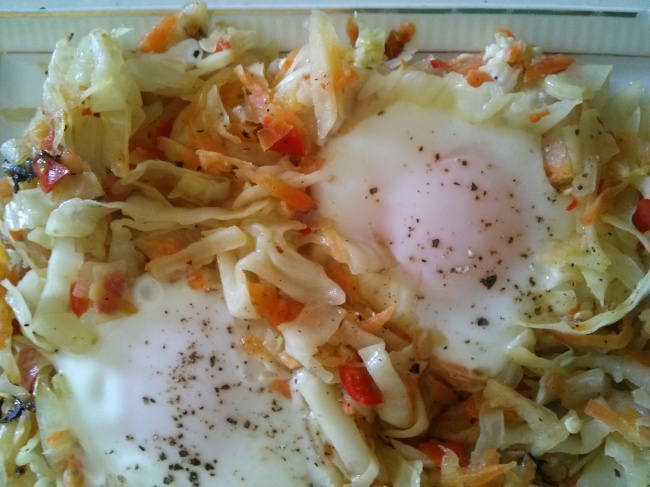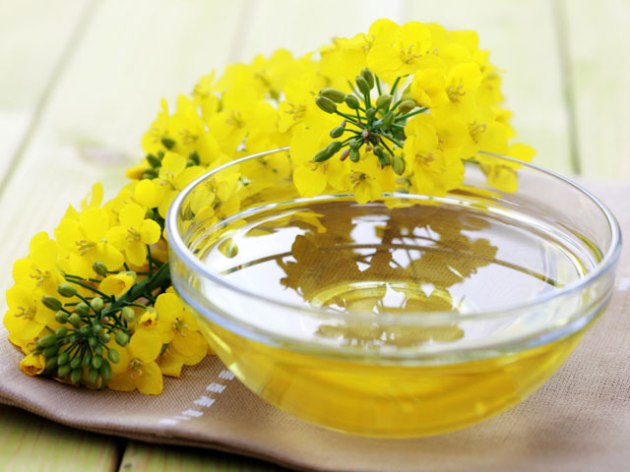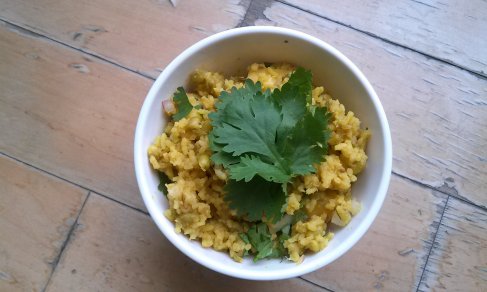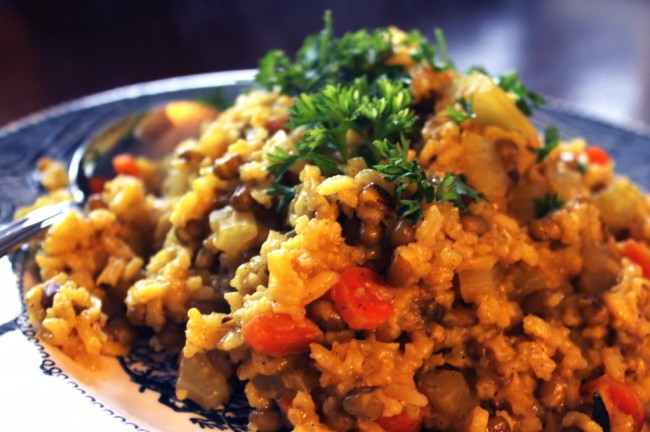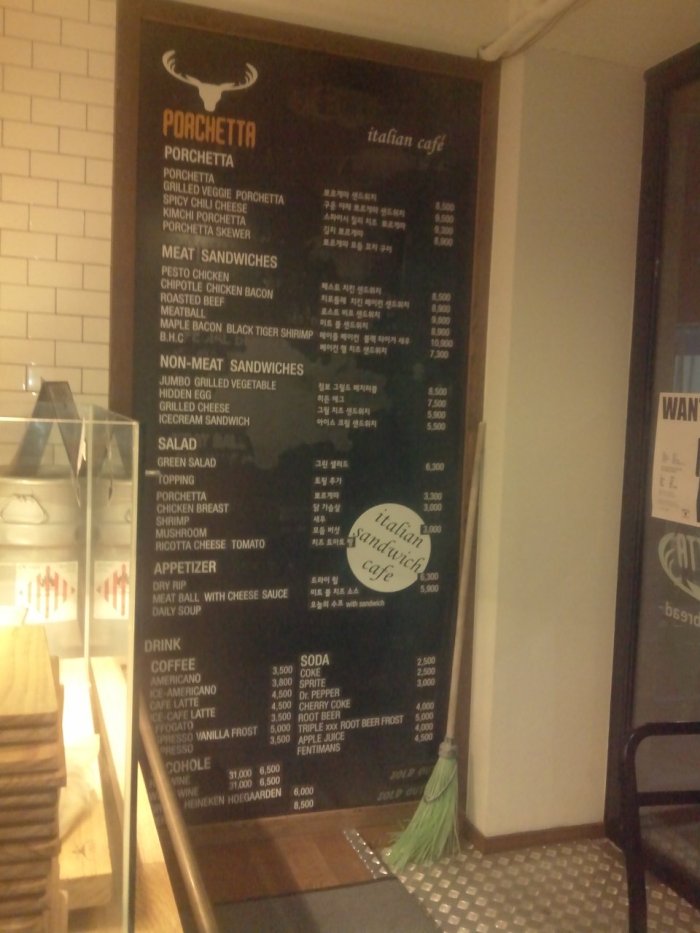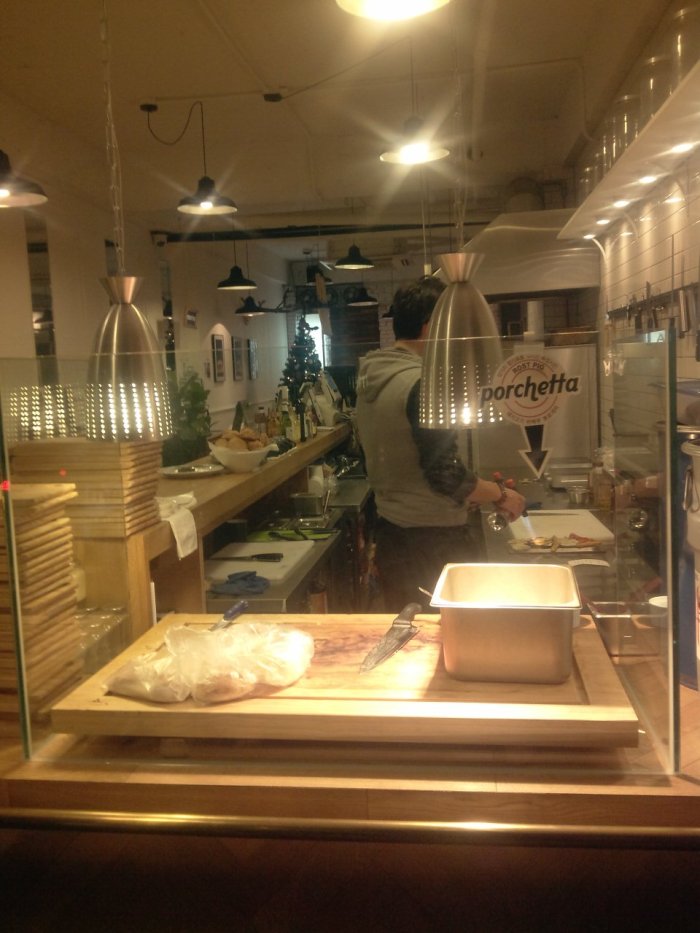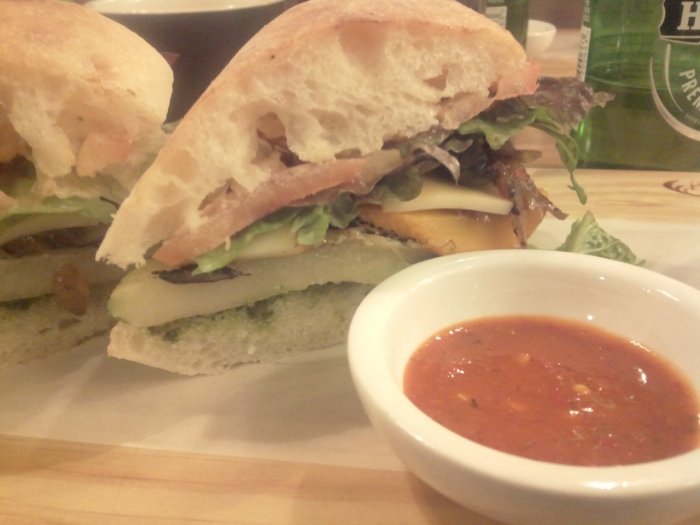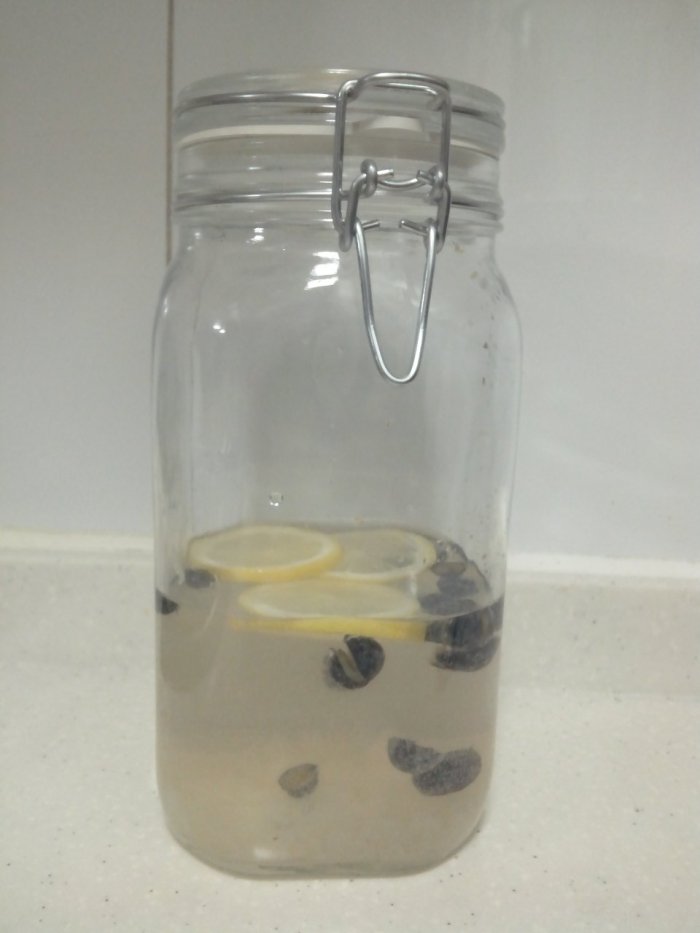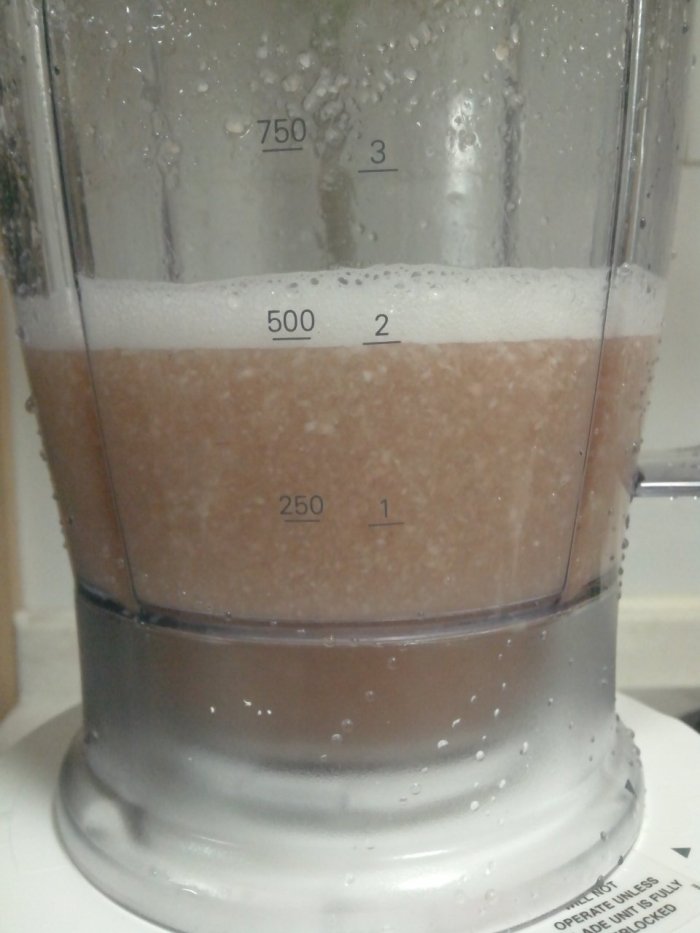WWOOF CSA Basket: From farm to table. Change your life from blah to waaaaaaah!
 Recently (more than a month ago – this post is looooong overdue) I was kindly given a taster basket of organic fruit, vegetables and breads from the lovely folks from WWOOF CSA Korea. Aside from being bowled over by the generous initiative, I was enamoured by the freshness of the produce, bursting with colour and flavour that has unfortunately become out of the ordinary. Whilst I always support local produce, I must admit that what I usually buy for my personal use is sometimes not always organic. Whilst the dirty dozen is always organic, I usually frequent my local ajumma market as her produce quality is amazing. However, with the convenience, quality, seasonal variety and the knowledge that I am supporting local farmers who believe in the same ethos as I do, this will all change for the better as I am now signing up to receive my weekly basket of produce.
Recently (more than a month ago – this post is looooong overdue) I was kindly given a taster basket of organic fruit, vegetables and breads from the lovely folks from WWOOF CSA Korea. Aside from being bowled over by the generous initiative, I was enamoured by the freshness of the produce, bursting with colour and flavour that has unfortunately become out of the ordinary. Whilst I always support local produce, I must admit that what I usually buy for my personal use is sometimes not always organic. Whilst the dirty dozen is always organic, I usually frequent my local ajumma market as her produce quality is amazing. However, with the convenience, quality, seasonal variety and the knowledge that I am supporting local farmers who believe in the same ethos as I do, this will all change for the better as I am now signing up to receive my weekly basket of produce.
So, to start from the beginning. What exactly is WWOOF? It’s an acronym for World Wide Opportunities on Organic Farms which is an international movement with non profit organisations in over 100 countries. They have programs between WWOOFer’s and hosts where you work on their farms, planting or harvesting produce etc in exchange for food and accommodation.
CSA stands for Community Supported Agriculture, which is a mutually supportive relationship between producers and consumers. The benefits are the farmers are able to have a reliable market for a variety of products and the consumer is able to attain fresh and organic produce from responsible, local farmers. It’s a win-win situation for everybody.
Whilst WWOOF CSA is a part of WWOOF Korea, it is technically a seperate entity with specific farms for the CSA products. WWOOF Korea has farms across the entire peninsula from Jeju-Do to Ulleung-Do, however the majority of the CSA produce comes from Paldang, in the Namyangju region ofGyeonggi-do. Paldang is the base of WWOOF CSA operations where the baskets are packed and delivered from, whilst the Namyangju region is the biggest organic farming district in South Korea.
Another reason to support this movement is that for such a dense population and a country which has made itself proud and renowned for their ability to develop and grow in the face of adversity, is that surprisingly and unfortunately, South Korea has one of the lowest food self sufficiency rates out of all the OECD (Organisation for Economic Co-operation and Development) countries. Standing at around 50% self sufficiency, this percentage drops to 26% when looking at rice, grains, wheat and barley. Drastically low numbers considering South Korea is an extremely patriotic nation that not only eats ALOT of rice, but prides itself on its cuisine and supporting the fellow man.
So, the basket. In a country where we quite often feel foreign, no matter how long we have lived here for, it is a lifesaver to be able to receive quality produce we can trust within a delivery mode we are familiar with. The baskets are delivered weekly, to any locations in South Korea, with two sizes available, whether you are cooking for one or cooking for four. They also have a Taster Basket which allows you to try out a single basket before committing, or perhaps giving the gift of sharing to introduce friends or family to the concept. The baskets contain a variety of seasonal produce, eggs, breads and condiments, and can be altered to suit vegan or gluten-free (no bread) lifestyles. I could waffle on however will spare you the pain and instead click on the link to find out more.
“In a world where handful of conglomerates own our food supply, down to actual patents on seeds and the rampant use of chemical pesticides, herbicide, fungicides, fertilisers and GMO’s is a status quo, we are in dire need of a correction.”
So what did I think of the basket? As mentioned before, the quality, freshness and variety of the produce was top shelf baby. The cabbage so green and cabbagey. The strength of the flavour made it seem like I had been previously eating dishwater texture like food. The carrots were so bright I needed sunglasses and so sweet that I munched one straight up. The apples where so crisp and sweet that they were devoured straight up, no recipe could do these babies justice. When I have produce this fresh, I find it difficult to not enjoy them in their natural glory, no added salt, sauces or anything necessary. However for the sake of the blog and to also inspire those who like a bit more spice in their life, I also made a chili and an easy peasy vegetable hash with eggs.
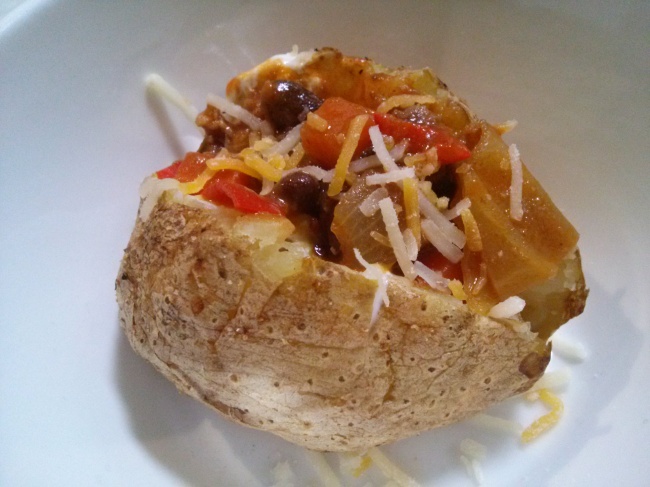 Bean and vegetable chili (onions, cabbage, carrots and potato from WWOOF CSA)
Bean and vegetable chili (onions, cabbage, carrots and potato from WWOOF CSA)
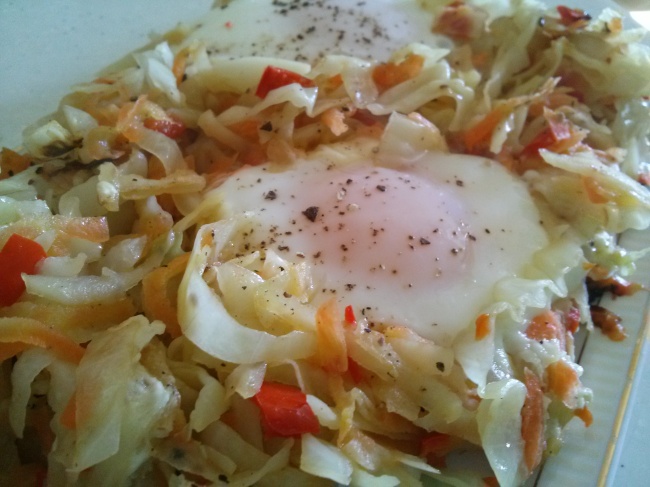
Vegetable hash with eggs (cabbage, carrots, potato, onions and eggs from WWOOF CSA)
Vegetable Hash with eggs
A super easy recipe that allows the natural wondrous flavour of the vegetables to be enhanced!
Ingredients
(For best results, use WWOOF CSA produce!)
1/4 cabbage
1 potato
1 carrot
1/2 onion
1tbsp garlic (yes tbsp – I love me garlic)
2 red chillies
1 tbsp coconut oil
salt and pepper
2 eggs
Method
1. Chop all vegetables like this 🙂
2. Warm coconut oil in pan. Throw in all veges and lightly saute for 2 minutes over medium heat. Season as desired with salt and pepper.
3. After 2 minutes, make 2 holes for the eggs. Crack eggs in the hole. A trick I do to seal the eggs is add a tsp of cold water to the pan, cover with a lid or foil, and let the steam seal the top of the eggs.
4. Cook until eggs are done to your liking.
5. Serve immediately and sprinkle with cracked pepper. Eat immediately and enjoy the rest of the day.
Also included in the basket were breads, tofu cake and egg omelette. Although I avoid gluten, these were gobbled quickly by my bread-loving boyfriend who asked “When are you gonna get more of this?”
Soon, my dear, my next basket is on its way from WWOOF CSA, make sure you get yours too!
http://wwoofcsa.com/join/
https://www.facebook.com/KOREAWWOOF?fref=ts
Canola……the real deal.
So, quick pop quiz.
Coconut oil comes from…coconuts. Sesame oil comes from…..sesame seeds. Soybean oil comes from…..Monsanto soybeans.
Canola oil comes from….canola seeds? Canola leaves? Hang on, what exactly is a canola? A plant? A seed?
Alright, stop, collaborate and listen.
Whole*istic’s back with brand new information.
False claims grab a hold of me tightly,
Flows like FAKE OIL daily and nightly.
Will it ever stop?
Yo, I hope so.
^^(Click the above link for an explanation for this lyrical rap genius….haha)
Anyway, back to 2013. And the mystery surrounding what exactly the ‘healthy, omega-3 Canola Oil’ is made from if there are no canola plants in existence.
Canola is actually a man made acronym for CANadian Oil Low Acid, which is made from a man made, genetically modified rapeseed plant. (No wonder they chose a more friendly sounding name to market the oil. Canola, rhymes with granola, evoking healthy images. Rapeseed evokes, well the pillage of a seed, which in actual fact, is what has happened to the new franken-seed-rapeseed.) After rejecting the first name of LEAR (Low Erucic Acid Rapeseed) due to fears the consumers again would reject the name rapeseed, as if lear (leer) is any better, Rapeseed Oil became LEAR which became Canola.
Oh the games they play.
Rapeseed, in its original, unadultered state, dates back many thousands of years ago, with usage in cooking in India and China, therefore it must be safe right? However a big difference, was the seeds, in small quantities only, were cold pressed to be used immediately as once exposed to oxygen, the oil would spoil very quickly.
Following this, rapeseed oil was used in Europe in oil lamps and with the development of steam power, a lubricant to steam train mechanisms. However, when World War 2 blocked European and Asian sources of rapeseed oil, mass shortages resulted in Canada ramping up its small rapeseed production.
Rapeseed oil in its preGM’ified state contains (reportedly) toxic substances glucosinolates and erucic acid. Glucosinates act as a natural insecticide with bugs avoiding the seeds from this plant as they have a strongly unappetising bitter taste. (Hence its use in insect repellent) The presence of chlorophyll also renders the oil an unappealing green colour. Studies from animals have shown that the consumption of erucic acid can cause heart damage, an increase in blood pressure, insulin resistance, increased risk of stroke, causes kidney lesions, and shortens life span (to this date there have been no human studies – except for the current selling of Canola Oil – eat at your own will, paying to be a guinea pig!?!) whilst livestock fed feed with rapeseed oil wouldn’t eat it. The above symptoms in animals is not linked directly to the fatty acid content of the oil, but other unidentified substances unique to canola oil. I understand there are unidentified things in the world. Aliens and their spacecrafts, ghosts. These are things unidentified and I’m ok with that. But, people, unidentified food. Food. Food we put into our bodies to nourish and protect us. Why on earth would you want to eat something that has yet to be identified?
It was for these reasons, rapeseed was the victim of seed splitting in the 1970’s, to reduce the above unsavoury symptoms, whilst also dramatically changing the nutrition profile. This genetic modifying has still continued right up until 2011 to change the plants durability to weather and drought conditions, allowing the seed to truly replicate its namesake. Raping of a seed.
And who pays the penalty? What outcome will this have on our health, our bodies, our land?
But that’s not all that has changed. To make rapeseed oil into canola oil fit for human consumption and to stay pre packaged in plastic bottles for years at a time on a supermarket shelf, flown in a plane several thousand kilometres , you can imagine the highly scientific and mechanical process involved. If your imagination got stuck at ‘plane’ and you’re now imagining holidays on the beach in Thailand with a coconut in one hand and a good book in the other, let me notarise the whole arduous process:
1. At a processing plant, oil is removed from the rapeseed through a combination of high temperature mechanical pressing.2. This oil is further refined through hexane solvent extraction. Despite considerable refining, traces of hexane still remain.
3. A second caustic refining, to bleach and degumm the oil.
4. Due to the high levels of good fats, 11% omega-3 and 21% omega-6, the oil becomes rancid and foul-smelling when subjected to oxygen and high temperatures. Therefore the oil must be further deodorised. This standard deodorisation process removes a large portion of omega-3 fatty acids turning them into (da da da DA) trans fatty acids. Compare this with olive oil (which is apparently having problems in Italy with the mafia cutting it with canola oil.) {BTW – what’s with all the food crimes – as if our food isn’t having enough problems as it is. Forget robbing banks, maple syrup anyone? oysters?}
Back to olive oil, which is comparatively coldpressed to reduce the oxidisation of the oil.
Interestingly, 43% of the rapeseed seed produces oil. The remaining 57% (eh, how do you like them math apples) is used as animal feed. So, even if you avoid canola oil, chances are, unles you’re buying grass fed meat, you’re still ingesting the lovely GMO rapeseed. And soybean. And corn. And….just….say….no.
And, of course, with canola oil being touted as the healthy alternative to fry food in or a good alternative to butter or other oils in baking or cooking, a bad oil is only made worse with heat. Heat effectively kills all the Alpha Linolenic Acids (ALA) which is the omega-3 fats found in the original rapeseed oil. If you remember the process to make canola oil above, these omega-3 and omega-6 fats have already been killed off and transformed during the high heat oil extraction process. Any that escaped this process of being turned into trans fatty acids, receive no saviour during heated food preparations.
So, whilst I’m not bashing the actual rapeseed. When used as nature intended, in small, freshly extracted using cold pressed oil extraction methods, like any other natural foods, I am sure rapeseed has its benefits and wonderful uses. However, what grinds my gears, is that this is a genetically modified food and whilst the pro’s are seemingly miraculous, science has created a seed which has taken away all the negative properties from a food we maybe weren’t really meant to ingest in the quantities we do today or made it easier to be farmed and withstand harsh climate conditions, herbicides, insects etc, but at what cost. This is an oil that was introduced in the 1970’s, with new genetically modified seeds being introduced right up to two years ago, probably even now. How can we possibly know the results of our mutiny? With no human testing done, bar the mass consumption of this oil as we speak (and let’s face it, humanity isn’t fareing that well at the moment are they) are you willing to be a guines pig, let alone pay for this honour?
THIRTYbyTHIRTY
So, I feel a sense of impending doom.
Signs that imminent danger is looming just over the horizon.
1983 was the year KISS first appeared publicly without their makeup (however nobody recognised them hahaha), Red Hot Chili Peppers released their first album.
McDonalds introduced the magnificent, magical, mystery meat filled McNugget (I last had them, or any McDonalds product for that matter, just into the New Year of 2011 in Prague, Czech Republic. Happily and fantastically inebriated, in the company of my wonderful sister and brother-in-law, the memory of traipising around one of the most beautiful cities in the world, (so beautiful Hitler declared it was to remain untouched) and the story of forlorness concerning the McNuggets remains such a cherished memory, I wouldn’t trade the shitty food choice for any amount of clean eating kale chips – and when drunk who says “Man, I could destroy a tray of dehydrated kale chips and crudites!” NOBODY. Ain’t nobody got time for that!)
Ocean Spray introduced the first tetra pak juice box to supermarkets US-wide.
Kids were fascinated over Rubik’s Cubes, Hacky Sacks, Cabbage Patch Kids and boom box’s were cool beans dude.
Cinemas were choka-block full with Flashdancers and returning Jedi’s.
And thirty years ago in a small, sleepy fishing town, home to the nation’s prized dog, this honeymoon baby was popped out and somewhat welcomed into the world.
“Welcomed/wanted?
Had/hidden.
Copulated/Child,
Result: Repressed/Relinquished.
Irrelevant for this post.
Relevant to me, most.”
So, the point to this post. In a few months I’m turning 30. Joining my best friends in the dirty thirties.
30 is the new 20.
30 is when you become a woman.
30 is when you have the best sex of your life.
30 is when you know yourself.
30 is 30 is 30 is 30 is the end is the end is the end is the start.
It’s a number. But it’s so much more than that.
It’s a pressure we place on ourselves to have achieved this, saved that, bought that, reared and raised this, seen that, travelled there.
I’m just stoked I got through the years of fear and loathing in my early 20’s (who am I kidding, ALL my 20’s) and the return of the almighty Saturn in recent years.
Thirty, oh dear old dirty Thirty, when I meet you head on in a couple of months time I’m gonna have me a wee little party with the friends (and in spirit, my beloved family and friends down under) I hold dear, filled with fine food, single malt whiskey and beer.
So here’s my list, of thirty things to achieve by thirty. Some superficial, some trivial. Some sentimental, some endearing. Some challenging, some silly.
Kind of like the person I’ve grown to be.
THIRTYbyTHIRTY
- Start a traditional Korean cooking course at Plaisir Gourmand
- Start Korean language class (and this time finish it!)
- Take my Ko-mum for a meal – by ourselves.
- On my ONE.DAY.OFF go to Seoul Station and take a train to the place where it will arrive closest to 13:13.
- Make fresh squid ink pasta.
- Wear shorts.
- Babysit K&D’s baby for the day/night while they get to live out their long forgotten boozy days.
- Host a dinner party.
- Grow a plant from a seed.
- Make a video of my time in Korea for my grandparents.
- Find and visit my foster family.
- Volunteer at the Eastern Welfare Orphanage.
- Send my sister a snail mail.
- Read a poem at an open mic night.
- Foster an animal. Do not adopt this animal, repeat – do not adopt this animal!!
- Visit the eel restaurant in Paju.
- Live out my powerlifting dreams and adhere to the regime I’ve got a weird interest in.
- Enrol in the Institute of Intergative Nutrition Course
- Buy cookbook and make a recipe a week.
- Visit Jeollanam-do to walk over Wolchulsan suspension bridge in attempt to overcome my fear of bridges. (I think bridges are beautiful, I’m fascinated by them, yet despite my faith in maths and physics and many friends that are civil engineers….I always fear for my life when going over a bridge….)
- Host a cooking demonstration class (if this does not eventuate via my job – then upload a cooking video to YouTube)
- Run 5kms.
- Buy a skateboard.
- Create my cooking CV.
- Cut my hair at least half its length.
- Visit a buddhist monastery.
- Buy my nephew a drum (In my attempt to make him as amazing as Neil Pert. Rush. This is complemented by number 28)
- Make my sister grow my nephew’s hair long. 80’s hair rock long.
- Go to a driving range.
- Overcome my fear and loathing of my own body and visit a jimjibang. Actually, spend a night at the jimjibang eating ramen (have never eaten ramen) and watching Korean dramas whilst actually just sitting playing on my smart phone.
I think 25 might happen this weekend.
If anybody wants an invite to number 5, 8 or help me eat the efforts at 19, wants to come on along for numbers 16, 20 and 29 or help me (ie: drag me along) for number 22 – here’s your invitation!
Vinyasa. Meditation. Repeat.
So, I’ve been sticking to this Kitchari cleanse for 3 full days now (I realise how ridiculously short that sounds, but I’m pretty in tune with my body) and to be completely honest, I don’t feel that great.
I generally don’t eat rice (shock! horror! How can a Korean girl not eat rice?) or any other starchy carbohydrates like pasta, bread, flour based foods or even high protein carbs like beans or even superdeluxe quinoa due to feeling pretty sloth-like, bloated and unsatiated. So, to switch suddenly to a diet that is based on a foundation of beans and rice, I have to tell ‘ya, I did have my reservations, (hence the weeks of research) yet the positive, holier than thou, second coming, pillars of enlightenment results people spoke of lured me in.
And I guess this is why nutrition is such a personal thing. I’m not saying that Kitchari is not a healthy, nourishing food. Indeed it is, it has to be. A meal consisting of basmati rice, mung beans, vegetables and spices, on paper, seems to be a perfect, harmonious blend of proteins, carbohydrates, fat (from coconut oil or ghee) and minerals. It is also deliciously tasty and aromatic and by changing the variety of vegetables or even bean, it is never boring.

My 2nd Kitchari – see I gave it a chance.
It wasn’t eating it that has been the issue, I do enjoy foods like this, an Indian style risotto if you will (cooking methods are quite similar, however, flavours couldn’t be at more polar opposites) It’s just the lethargic, heavy feeling I’ve had since I started eating it on Saturday, adhering to it fully on Sunday.
Through my interest in nutrition and fitness and twenty years spent dancing and obsessing over every muscle group and fat cell, I’ve learnt what works for my body, in terms of physique, digestion and feeling clear, focused and energised in my mind and spirit.
It’s nothing that I’ve learnt in one book. It’s not following one particular lifestyle or nutritional plan. Geez, it’s not even from one specific country!
I’m not going to lie; that would be more unwhole*istic than purporting to be this ethereal raw food, vegan that, well, basically I am not.
I seem to crave a lot of protein; animal protein in fact. Eggs, oedeng**, seafood, pork (I’m essentially Korean – it’s not my fault), lamb. (I grew up in Australia where BBQ was dinner 3 times of the week, salad optional)
** I know oedeng is like the hideous 2nd cousin of the hotdog, a mish mash of fish whatever’s, starch and MSG and probably a fair few artificial somethings and what-nots, but again, it’s in my blood. I love ’em….. O.O
I love fruits and vegetables.
I don’t eat meat/animal products every day, or even every second day. But, I do eat them. And, I do crave and enjoy them. Just as I crave vegan or raw food aswell.
I’ve seen all the documentaries, I support the cause, I feel the exact same rage and emotions you do at the intolerable cruelty to animals on every brutal level from factory farming, fish farms, ocean depleting net fishing and inhumane slaughtering to the heinous and unnecessary fur farms, animal testing that yields no worthy results. I won’t visit the circus, zoo’s or aquariums because I believe those environments are distressing, cruel and make a mockery of the animals, depriving them of their most basic rights.
In an ideal world, well in my ideal of an ideal world, I don’t necessarily think that humans would be herbivores. I just think our modern world, our need for instant gratification, greed and gluttony, changed the ways of farming and agriculture so inherently, that we no longer even recognise or identify what is on our plates from where it was sourced/created.
In Australia it is easier for me to make more ethical choices regarding the food I eat as there is a greater awareness of organic, ethical farming; for both produce and animals. In Korea, whilst I can recognise organic produce, I very rarely will buy meat/seafood as I have absolutely no idea where it’s coming from, it’s a stab in the dark (horrible unethical pun) to guess what part of the animal it is aswell. And when the pork/fish/seafood is that cheap, I always wonder what on earth happened for that meat to become that cheap, I don’t even want to know.
They say, ignorance is bliss. But I believe, knowledge is power. The power to make well informed decisions, to stand by your beliefs or at least have the understanding of why you feel strongly about certain issues.
Which is why I fight a battle, feel pangs of guilt (that obviously do not outweigh my pangs of hunger) whenever I make a choice to eat meat, yet something rationalises it in my head. Snippets of ignorance, shunning thoughts of the torture, isolation, despair and downright, miserable, cruddy life the animal spent alive (not living, just barely alive) and endured to end up on my fork. I hesitate for a moment, also thinking of the hormones, disease and adrenaine I am ingesting, but these are dismissed as I flick back into the current moment, the senses evoked with smells, sounds of enjoyment from my dining partners, the sight of dishes that bring me great culinary delight and moral disdain, such as sashimi, eggs florentine, a steaming tagine of sweet morrocan lamb topped with a thick, plain yogurt, a freshly grilled seafood platter of prawns, scallops and snapper stuffed with lemon, garlic, chilli, coriander and italian parsley or the wonders of Vietnamese cuisine with their fresh produce and salty, spicy, sweet and sour flavours offset by meagre, yet adequate portions of meat and seafood.
And it’s these dishes, these are my weakness that make me question my ethics and viewpoints, However, these dishes are also unique to various cultures and so deeply ingrained in tradition and history, around long before the advent of factory farming or the gross misuse of animals and greed for their flesh began. They are traditionally celebratory dishes, to be consumed at momentous moments in life, where the life and death of the animal was revered and appreciated. Not bought at a generic corner franchised establishment as some quick and easy meal of convenience.
Anyway….. the Vinyasa has been amazing, grounding and a welcome change from what I would usually do, a perfect way to start and finish the day. I have been using some videos off youtube which allow me to practice from home, although I am not sure my technique is on point…..
I like this one for morning and this one in the evening.
As well as the Vinyasa, the meditation I’ve been practicing is from an app called Relax and Rest available on both android and all i-apps-things-whatever you call that family of ipods, iphones, ipads, macbooks you-know-what-i-mean! No matter what time of day, state of mood (from stressed, anxious, tired but can’t settle to dealing with a snoring boyfriend who smells like a beer) it always sends me off on a dreamy path of sleep, when nothing but alcohol or sedatives worked in the past.
And anyway, so that’s my long-winded review of Kitchari, with a side order of ethics, rants and opinions. It tastes great, amazing in fact, but makes me feel like, well….this…..
Have you any experiences with Kitchari? Do certain grains, rice legumes or flours make you feel like this? (I don’t think I have a gluten intolerance though) Do you wage your own moral war with yourself with regards to the eating of animals? Do you find it difficult to practice veganism? Do you think it is hypocritical of me to have a blog or specialise in vegan food when I myself don’t eat 100% vegan?
Kitchari. Vinyasa. Meditation. Repeat.
Do you ever find yourself consumed by something, be it a food or a recipe, a creative endeavour, a new hobby, a lifestyle change or destination? And this thought snowballs as you try to find out everything about it; what defines it, what destroys it, what you have and what you need, the logistics of making it possible. As this thought metamorphoses into a reality, it becomes so deeply etched in your mind and daily life that it beats like a drum in tune with your heartbeat.
You know that it is the way forward, more than merely a passing phase, yet cannot for the life of you remember what it was that triggered the first interest, what sparked the direction of your thoughts. However, it doesn’t even matter. Life has a peculiar habit of drawing you in the direction you need to be.
Upon the death of my father, I had a similar all-consuming desire to practice Bikram Yoga. I had never heard of such a practice. Nobody I knew engaged in this discipline of yoga and there were only two studios in the entire city, one being a short 5 minute bus ride away albeit in a direction I had never been.
I cannot stand hot weather. I loathe feeling warm, and I grew up in tropical Queensland, Australia.
Yet, for 6 months I practiced Bikram 5-6 days a week. I sweated out my anger at losing my dad. I meditated for the duration of the 90 minute class to grasp control of my grief. And, I challenged and pushed myself more than I ever did through school or university.
I never sat down, laid down, drank water or vomited once in the class. There were times I didn’t want to go, times I thought my practice was getting worse, times I thought I wouldn’t make it through the class. But then there were also times I felt I was finally in control of something in my life, times I thought this was my calling and I would pay the ridiculous tens of thousands of dollars to become a Bikram Yoga teacher.
And then, I’m not really sure what happened. Like everything, in which I seem to go all or nothing in to, oneday, I just stopped.
But, this post is not about my obsessive foray into Bikram Yoga. That was just more of a long winded comparison. A warm-up. A pre-game. A precursor. An appetiser.
So, sometime in the last fortnight, upon exiting my cave of depression, something was guiding me in the direction of all things ayurvedic, yogic and holistic. I took time to remember my intrinsic beliefs, to take things back to basics, strip myself of all prescriptions, partying and poisonous food and behaviours in order to have a cleaner, lighter, more focused mind, body and soul.
“The path of meditation requires a moderate, regulated life,
avoiding too much or too little food, work,
and sleep, or use of the senses.
The attention must abide in the soul all the time.
For such a person, yoga destroys all sorrows.”— Bhagavad Gita
It is no surprise that in my kind of unconscious search (I started reading books again – chosen off my bookshelf, not before read – Light in Yoga, Clean and The Power of Now – which I still cannot get in to) I found myself late one night pulled in the direction of Kitchari.
Kitchari.
I had never heard of this. Never eaten this. Cannot rememember how I even found it. But, almost daily, I have been researching this cleansing, detoxifying yet nourishing one-pot-wonder that is a staple in India and as part of an Ayurvedic cleanse to purify the body by flushing out toxins.
Kitchari led me to research Ayurveda more, which I had always had some sort of interest in, however previously, upon face value, the practice had lost me completely at “no onions or garlic”
What?
I love nothing more than roasting some garlic cloves to consume straight up. I eat raw red onion until my stomach hurts.
Which is probably in essence why Ayurveda practices restriction or lowered intake of such sharp foods.
It’s funny though how we can immediately dispell a whole practice, centuries of research and proven results via longevity of life in good health merely because we disagree with one principle.
So, basically, the goal is to follow a Kitchari cleanse for 7 days – wherein Kitchari is the only meal consumed – then, assess the situation upon seeing the results. See, I mentioned in my last post I had been conducting all manners of experiemnts on myself. This is no exception. In order for this cleanse to be most effective, I will also be starting my day with a 15 minute meditation followed by Vinyasa yoga. Nights will also include another Vinyasa session and meditation before bed.
If after this (and I am prepared to do this cleanse for 30 days) I don’t feel changes in my mood, thoughts or energy levels, I just may give up on holistic nutrition and therapies and resolve myself to heroin.
Ummm, joking.
So anyway, what exactly is kitchari?
Directly translated, Kitchari means mixture, and usually pertains to a mix of two grains. Traditionally these are basmati rice and mung beans, however I did see many recipes using brown rice, yellow split peas, red lentils and even the Mr Famous grain, quinoa.
Whilst the variations are endless, with the additions and omissions of different spices, vegetables and even substitutions of different rice and lentils, I have refined my own recipe based on literally, about 50 different recipes, research into my dosha (Ayurvedic body and personality type – which I believe to be a pitta/kosha mix) and my own personal taste to come up with the following recipe:
Kitchari
Ingredients:
1 cup basmati rice (I got from Foreign Food Mart in Seoul – however will be buying organic off iherb for half the price)
1/2 cup mung beans (Again same as basmati rice – in future will be getting off iherb)
6 cups of water
2 tbsp coconut oil (I don’t want to use ghee, ie no dairy for me)
1 tsp cumin seeds
1 tsp cumin
1 tsp coriander powder
1 tsp fennel seeds
1 tsp turmeric
1 cup vegetables (I’m using cauliflower, broccoli, peas whilst in season – Ayurveda strongly recommends using seasonal produce, in line with my ethos too :))
coriander
Method:
Soak beans and rice overnight.
In a stainless steel or enamel pot, heat oil over medium heat. Add in spices and stir. Add in rice and beans and vigourously mix to thoroughly coat as this will prevent the rice and beans from turning to mush.
Add in the water and simmer covered for 30 mins.
10 minutes before cooking time is finished, add in any hard vegetables like carrots, sweet potato or in my case, cauliflower. 5 minutes out, add in softer ones like broccoli or peas.
Kitchari should resemble a thick dahl more than a soup. To finish, garnish with coriander and salt and pepper if desired.
Will be posting daily through this cleanse!
A picture says a thousand words
Which is fan’bloody’tastic because I’ve started and restarted, edited and re-edited, faffed about and waffled on, yet not even come close to finishing one of several million drafts of this post.
How to explain the absence in posts? How to share the reality of trying to live a holistic life in an unholistic world without sounding egotistical or boring you to tears? How to acquire the attribute I admire most in the blogs I like to read; that sense of personableness without sharing too many intimate details, so if you were to meet me outside of the virtual world, there wouldn’t be that this-is-weird-I-know-your-whole-life-story-but-we’ve-never-met type situation (which I recently encountered, but even worse, I just voyeured the whole situation so it seemed this blogger was on a life size screen – I will await their blog post on the place we co-inhabited – unleashing the internet stalker freak we all have happening inside right?)
So whilst I’ve been collecting my thoughts and working stuff out via creating psychological and chemical experiments on myself, also through an amazingly understanding and supportive sister and boyfriend and a job I actually love, I’ve sussed myself and this exhilirating ride we call, life, out. Well at least for another 6 months or so anyway.
And the results? The results, whilst not formulated through any conventional, scientific, traditional forms of medicine with stats or pie graphs, yet instead uncovered through inspiring (read – cheesy) quotes (yessss….often maybe with pictures of mountains or waterfalls cascading down into flowing streams and rockpools with unicorns and rainbow brite dolls), a rethink of things I’ve been blase about regarding my own diet via more education on nutrition through reading, watching documentaries and restricting different foods to see what results it has on my own personal wellbeing. I’ve also become more dedicated to practicing and understanding meditation, not just successfuly being able to put my insomniac self to sleep within 20 minutes, but also learning 1 or 2 minute meditations that have also helped me in my waking life (ie, resisting the urge to retaliate to the dotty old dear old ajumma who’s just pushed me aside whilst running for a free bus seat that doesn’t even exist on an over crowded bus) I have also been reading up on the principles and philosophy of yoga in order to gain a deeper knowledge of how this ancient meditative physical activity draws upon and enhances mental clarity and focus.
So, I guess, through the thick and the thin of it, I’ve been busy.
But, now the night, well it’s day now, is raging on (from my macbook – woooo!) and I’m still yet to come up with the desired post, an excuse for the lack of post, or pictures to excuse all previous shortcomings.
But I’ve got 440 words on the page, 444 now. And I’ll post some pictures of what I’ve been up to lately – to satisfy your inner voyeur 😉
Imitation is the sincerest form of flattery…..
However, there is a distinct line between drawing inspiration from someone else’s work as opposed to copying not only a concept, but a whole shop, right down to the actual menu, spatial design and interior decoration – including personal quirks.
Having worked as an interior designer, I value good design, but above all, design integrity.
I refer to my previous post, (which was sooooo long ago I know) where I hailed Porchetta as having a holier than thou vegan sandwich. I don’t want to slam a small business directly, or wish them into closure, however I think it’s important to be well informed, as things aren’t always as they appear.
After I had posted the previous blog entry, I received an email from Frankie Harrington, owner of Meat & Bread in Vancouver. The tone and delivery of the email was polite and informative, without any spite or malice. Frankie informed me that
“I built Meat & Bread sandwich shop and opened in October 2010 with my business partner. We grew up in restaurants and opening Meat & Bread was our first crack at owning our own. We took many risks in this venture and tried our hardest to be different and to stand out with our approach, cooking techniques and design.”
“It’s pretty upsetting to know that there are people that copy everything…inspiration is one thing but they took everything. My business partner and myself have worked very hard independently to open Meat & Bread…It’s not like we have bottomless pockets and come from a corporate background. This idea is as real as it get’s and we both still work at our two locations 6 days per week.”
Whilst I can not deny that I still dream of that sandwich from Porchetta, their ethics and morals have left a bitter aftertaste. It is a personal decision for me to decide not to visit Porchetta again, mind over stomach, ethics over hunger for me. Besides, Casablanca is just a 5 minute walk away when a carby craving hits, and it hits the spot oh so good.
Porchetta: A brilliant sandwich spot for a vegan!
I’m serious. I’ve had THE best vegan sandwich of my life here. And I’ve sampled them around the world, Australia, England, Sweden, Laos, Spain to name a few.
I’d been craving a sandwich for a few weeks, yet for reasons of time and a slightly OCD’ish manner of not settling for sub-par food, the craving had remained unfulfilled. However, to be perfectly honest, after finishing up a particularly stressful Sunday of work, when a co-worker suggested ‘Porchetta’ for dinner, I was less than impressed. Mmmmm, sure I thought, I’ll just have the porchetta sandwich, minus the porchetta.
Oh…..how I was wrong….flip the menu, order number 10, hold the cheese, choose the sambal dipping sauce and wash it all down with a Hitachinonest Espresso Stout (whilst I love this beer – odd choice, they should’ve had at least an ubiquitous Peroni?)
Who would’ve ever thought that the most fulfilling, perfectly grilled fresh vegetables tossed in a light olive oil and herb dressing sandwich would come from Korea, and more specifically, a sandwicherie that specialises in Italian Porchetta – which my fellow dining partners told me was also the best porchetta they’ve had.
This new generation of Korean entrepre-restrauneurs (yeah I’m making words up here – but you get it yeah, in fact – you love it, oh yeah!) are well travelled and don’t do things by halves. If they want to open a boulangerie, they’ve been to Paris, learnt from the artisans themselves, and bought the french flour back to prove it (Alaska in Garosugil uses only French flour). If they want to open a pizzeria, they go to Naples, learn the craft to form a pizza straight out of Italy that isn’t comletely covered in yellow cheese and contains fresh red sauce and real basil (Blacksmith Pizza, Jongno – not the chain that is everywhere, but the small, kitscho restaurant aptly named because he is an actual blacksmith)
And if they want to open a Porchetta Sandwicherie – I’m guessing they’ve travelled to Italy, or at least have an understanding of what makes up a great sandwich.
Essentials to a great sandwich
1. The bread. It’s a deal breaker.
Should be soft, yet chewy. Hold the crusty baguettes for balsamic and olive oil dipping parties.
Filling to bread should not be in even ratios – think apple pie.
Filling to bread; 2:1.
I would’ve preferred wholemeal, but as this was a pillow of goodness, I’m not complaining.
2. Fillings. It’s a ball breaker.
You can’t polish a turd. No matter how good the bread is, it won’t camouflage poor quality fillings or weird combinations (although I do love crisps and vegemite – but I’m not selling it)
They need to be fresh, abundant and proportionate. You don’t want to be tasting all onion wondering where your damn semi dried tomato went too, considering that’s what jacked the price up to ₩8,500.
Several times I stopped to just examine the fillings of the sandwich, I was amazed at the variety and freshness of the fillings, roasted eggplant, zucchini, pumpkin, potato, mushroom, fresh tomato – wow.
3. The spread.
Needs to be tasteful and moist.
With a plethora of condiments, fancy butters, jams, relishes, mustards and mayo’s out there, we’ve come a long way from humble margarine beginnings.
The spread needs to be tasted, but not overpowering. Complementary yet not competing with the fillings.
A light basil pesto was used which led to a discussion of “How good is this basil pesto!”
4. The drip.
Like any good burger, a hot sandwich needs to have some guts and it should be messy, juices running down your hand as you eat it.
I don’t know why exactly, a testament to its freshness perhaps?
5. And now apparently, a dipping sauce.
I was just going to write, I’m not one to dip….but thinking back to my childhood I’ve fond memories of Le Snak, Dunkaroos, Yim Yam’s (who doesn’t remember the disappointment when you found out the dipping chocolate wasn’t the length of the sticks?) but dipping a whole sandwich?
What the?
And somehow, with all the different flavours of the vegetables and the basil pesto, the sambal dipping sauce, more sweet than hot – kind of like red capsicum than red chilli, went amazingly well.
The lowdown:
Jumbo Grilled Vegetable sandwich ₩8,500
Ask them to hold the cheese to make it vegan
I highly suggest the sambal dipping sauce.
Where:
Noksapyeong.
Take Subway Line 6 to Noksapyeong Station, exit 2. Walk straight for 500 metres take the underpass to the other side of the street. Take the street right from Noxa and it’s on the left hand side about three doors down (hmmm, maybe 5 but I just wanted to remind you all about that mediocre 90’s soft rock band)
Water Kefir: Stage 1
Lately I’ve become interested in fermented food products, probably a result of being surrounded by hundreds of kinds of kimchi and also learning how my friend, Hiromi, makes her own miso.
The earliest record of fermentation dates back as far as 6000 B.C. in the Fertile Crescent—and nearly every civilization since has included at least one fermented food in its culinary heritage. From Korean kimchi and Indian chutneys to sauerkraut, yogurt and cheese, around the globe cultures have crafted unique flavors and traditions around fermentation to avoid spoilage in times of abundance, so it could be savoured in times of famine.
Traditional lacto-fermentation utilizes the microflora present on vegetables and a lactic acid bacteria starter culture. However, in large-scale food manufacturing practices, vegetables are washed in diluted chlorine solutions to destroy or inactivate existing microflora, and acetic acid (which, along with water, is a main component of vinegar) is used instead of lactic acid. Of the few commercially available pickles that are lacto-fermented, most are heat processed or pasteurized to create a sterile product. Others are “desalted” or rinsed, likely removing any beneficial bacteria that may have been present.
More incentive to make your own kimchi or fermented products.
The health benefits of fermented products are quite impressive; restoring balance to the levels of proper bacteria in the digestive tract, cleaning the body of antibiotics and reducing acidic levels, the good bacterias help fight off pathogenic microorganisms (ie: viruses), improves the immune system and metabolism as well as boosting overall energy levels.
However, most importantly, fermented foods = full on intense flavour! Think of the strong flavours of sauerkraut, kimchi and umeboshi plums.
A rundown of common fermented foods:
Kimchi is a traditional Korean lactofermented condiment made of cabbage and other vegetables and seasoned with
salt, garlic, ginger and chili peppers. Most Asian diets include a daily portion of some kind of pickled vegetable. Lacto-fermentation occurs when sugars and starches are converted to lactic acid by the lactobacilli that are prevalent in vegetables and fruits. The proliferation of lactobacilli in fermented vegetables enhances their digestibility and increases vitamin levels.

Kombucha is a culture of symbiotic beneficial bacteria and yeasts which originated in China nearly 2,000 years ago. This culture is brewed with tea and sugar and fermented into a sweet and sour, slightly effervescent drink. Kombucha contains many amino acids and B vitamins in addition to its bountiful population of beneficial microorganisms, and is believed to be an excellent stimulant to digestion and the immune system.

Miso is made by adding an enzymatic culture to a base of soybeans and, often, a grain (usually wheat, barley, or rice). Salt and water are the only other ingredients of natural miso. Through aging, the enzymes reduce the proteins, starches, and fats into amino acids, simple sugars and fatty acids. It also contains lactobacillus bacteria which aid in digestion. Miso is used as a soup base but is also good in sauces, gravies, dips, spreads, dressings and marinades. Always use unpasteurized miso, and don’t boil it; high temperatures will kill the beneficial microorganisms. Miso is a superb source of easily-assimilated complete protein.

Sauerkraut is a cabbage that has been salted and lacto-fermented over a period of weeks. Latin American cultures make a version of sauerkraut called cortido. The beneficial bacteria so abundant in sauerkraut produce numerous helpful enzymes as well as antibiotic and anti-carcinogenic substances. The main by-product, lactic acid, not only keeps vegetables and fruits in a state of preservation but also promotes the growth of healthy flora through out the intestine.

Umeboshi are salty sour lacto-fermented pickled plums (ume) from Japan. Umeboshi are highly alkaline and used to neutralize fatigue, stimulate the digestive system and promote the elimination of toxins. They are valued for their natural antibiotic properties and ability to regulate intestinal health.

Sourdough is a bread product made by a long fermentation of dough using naturally occurring yeasts and lactobacilli.

Tempeh is an ancient Indonesian staple made from cooked, split, fermented soybeans bound together with a mold that makes soy easier to digest and provides many valuable vitamins. Tempeh is an excellent protein source for calcium and iron, and the mold produces an antibiotic to increase the body’s resistance to infections.

Pickles
A wide range of vegetables (and sometimes fruits, nuts, seeds, animal products and other ingredients) can be lactofermented using salt, temperature and a controlled environment for a period of time to make pickles. Most modern pickles, however, are made using vinegars and/or heat processing, which limits or eliminates the beneficial bacteria and enzymes that result from lacto-fermentation; check the label to ensure pickles are fermented.
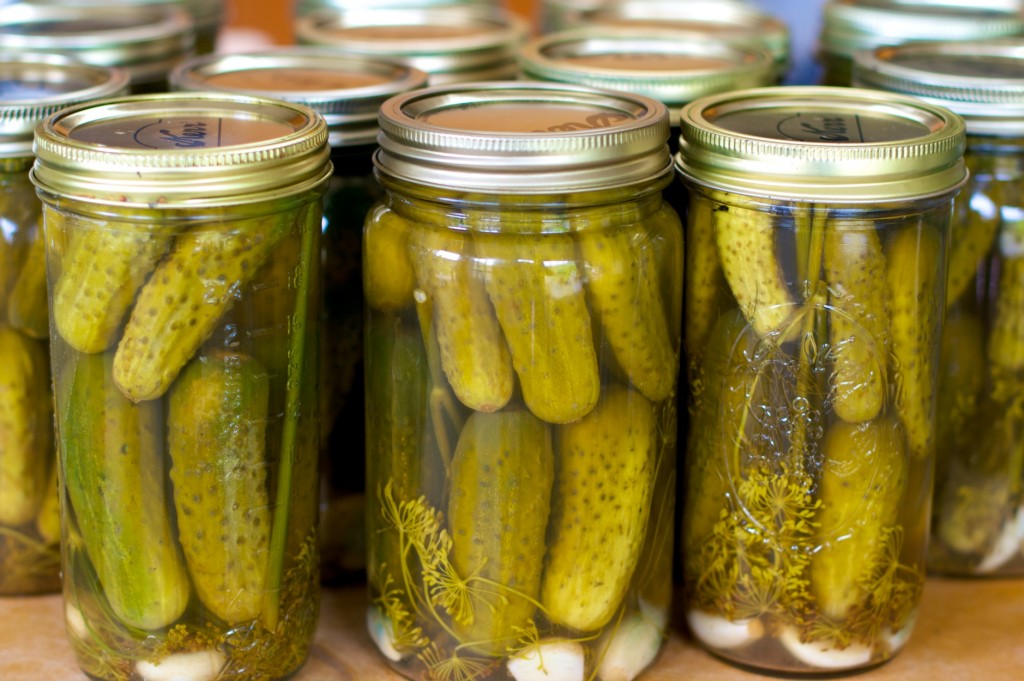
Yogurt & Kefir
Yogurt and kefir consist of milk that has been inoculated with live bacterial cultures. These cultures convert the milk’s lactose sugar into lactic acid. For people who have difficulty digesting the lactose in milk, cultured dairy products may be easier to digest because the live, active cultures produce lactase, which pre-digests the lactose.

So, the above is yogurt kefir. Kee-fur. Like Kiefer Sutherland. Y’know, that dude from 24, Melancholia?? He was the bully in Stand By Me…
Anyway. Being partial to all things dairy, and the ridiculous amount of sugar in those tiny bottles of probitotics that this one ajumma near my busstop always tries to push on me (I’m a pusher Cady), some late night researching led me to water kefir.
Water kefir, scientifically known as tibicos, is similar to yogurt kefir, except instead of feeding off the milk lactose, it feeds off sugar lactose. Now, I know this sounds like it seemingly contradicts what I said above about trying to avoid sugary probiotic drinks, however, the kefir crystals eat up most of the sugar, which is only 2 tablespoons to 3 cups of water. The resulting brew is definitly not sweet.
So what exactly is it?
Basically, it’s a bacterial yeast culture (mmm…sounds delicious) that looks like bath crystals. When added to mineral water mixed with sugar, the kefir grains eat the sugar producing strains of probiotic bacteria which carbonates the brew. If brewed correctly and in a stable environment, the grains will also multiply – allowing you to share the kefir love around.
I got my grains online from savvy teas, and if all goes well, I’m more than happy to share 😀
Once you’ve got the grains it’s so easy to make:
Water Kefir
Ingredients:
Water Kefir grains (2tsp dried grains or 1/3 cup wet grains)
3 cups mineral water (if using tap water, boil or set out overnight to remove/evaporate chlorine)
2 tbsp organic brown sugar
1/2 lemon – sliced
handful of raisins, banana, berries (encourages fermentation)
Method:
1. Place the grains, sugar, water and fruit in a sterilised glass jar with either a screw top or flip top lid.
2. Place in an area out of direct sunlight. Some suggest wrapping in towels or ‘burping’ the jar every now and then as the carbonation can build up and lead to some horror glass smashing stories. Also, avoid the use of metal spoons (pure stainless steel is ok) as this will affect the sensitive little grains.
 Bubbles of carbonation one hour in!
Bubbles of carbonation one hour in!
Stay tuned for the next update: the second brew – experimenting with flavours!!
(Non)Magic Mushrooms
So, again I find myself unable to find something here in Korea that I can easily acquire back home.
Nama Shoyu.
Nama whaty-what? you might ask?
Nama Shoyu is a Japanese soy sauce made of soybeans and whole wheat. Basically shoyu in Japanese means sauce. Nama = raw. Nama shoyu is the raw version of soy sauce. It has the same dark brown colour and rich, intense flavour, however because it is fermented and aged in wooden cedar barrels for a minimum of 4 years, it requires less salt to boost flavour, resulting in a layered, deeper, more full-bodied, smoother, (obviously) less salty taste.

Nama=raw. Shoyu=sauce.
However, technically raw in this case is raw=unpasteurised. There’s no way you can create the brewing and fermentation required without boiling these soybeans and wheat grains well above the allowed raw food qualifying temperature of 40.2 degrees celsius. With normal soy sauce, the mashed soybean and wheat grain mixture continues to cook in big vats to pasteurise; which quickens the process of enhancing flavours that usually takes many years in traditional wooden barrels. Hence the higher price of Nama Shoyu and Maserati like status.
It is still considered a raw food because similar to other fermented products like kefir and kombucha, it contains living enzymes. In normal recipes the amount of nama shoyu or other non-raw items like toasted sesame oil (toasting releases the aroma and warm, nutty taste from the sesame seeds) is so minimal in comparison to other ingredients used, yet the flavour brings such a depth and satisfaction to recipes, the rule is usually relaxed here.
Nama Shoyu (and also lemon juice) can be used to marinade raw vegetables to soften them. Simply add 1 tablespoon to a cup of vegetables, toss and stir occasionally, leave sit for 30 minutes and wa-laaa, relaxed, chilled out vege.
However, since in Korea I have started using Tamari, (I find normal soy sauce too salty and bitey/vinegary) which is also gluten and wheat-free, made purely by extracting the liquid from soybean miso. The flavour is more mellow and less salty. I find it gives the perfect umami flavouring to everything from soups to crackers.

Although, for an upcoming raw workshop I have become conscious of every single product I use. Trying to be as raw as possible I went to my faithful companion iherb.com to buy Nama Shoyu, only to find it unavailable for the past two weeks! Seeking another raw alternative I trawled the internet trying to find something magical.
I thought I’d hit the jackpot with this little number:
Take 3 simple ingredients:
Water, portobello mushroom and salt.
Blend.
Ta-daaaa!!!???
Now, I don’t know whether it’s because we don’t have portobello’s here, (which I’ve been informed by foraging man Dustin are basically “week old white buttons {a mutant of the crimini but exactly the same}, aka portabellos are fully grown white buttons without the white mutation at the store we get baby ones… the difference is about 2/3 days) or whether it’s just something I don’t like, but it didn’t have a rich, deep flavour.
Or even a rich, deep colour. Mine was reddish/pinkish and tasted exactly like what it was; blended white button mushrooms with some salt.
There was no transformation into savoury, umami, salty sauce goodness.
No magic in these mushrooms dammit.
So, onwards, I’m sticking to my Tamari for now. I’m partial to salt. If you’re not, stick to good ole’ local soy sauce. Your wallet will thank you.
We can get too bogged down in minor details, sure Tamari’s not raw, or I might use sesame oil, and I also enjoy many vegetables cooked vs raw, but I don’t subscribe or even pretend to be a raw food purist.
I understand the science and belief behind it, and will try to include these principles as much as I can in my daily life, but I’m not gonna be dogmatic about it, or lose sleep at night because I used Tamari and not some 100% salty mushroom water smoothie….
Faux nama shoyu, I challenge you again when I am in Australia next where “big old non white mutated agaricus bisporus” roam wild and free, and I expect to see some magic, psilocybin or sauce like, I don’t mind, it’s all raw, right?!
